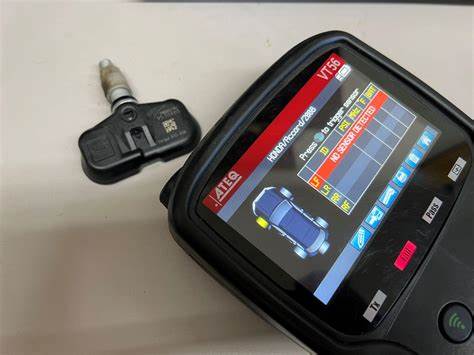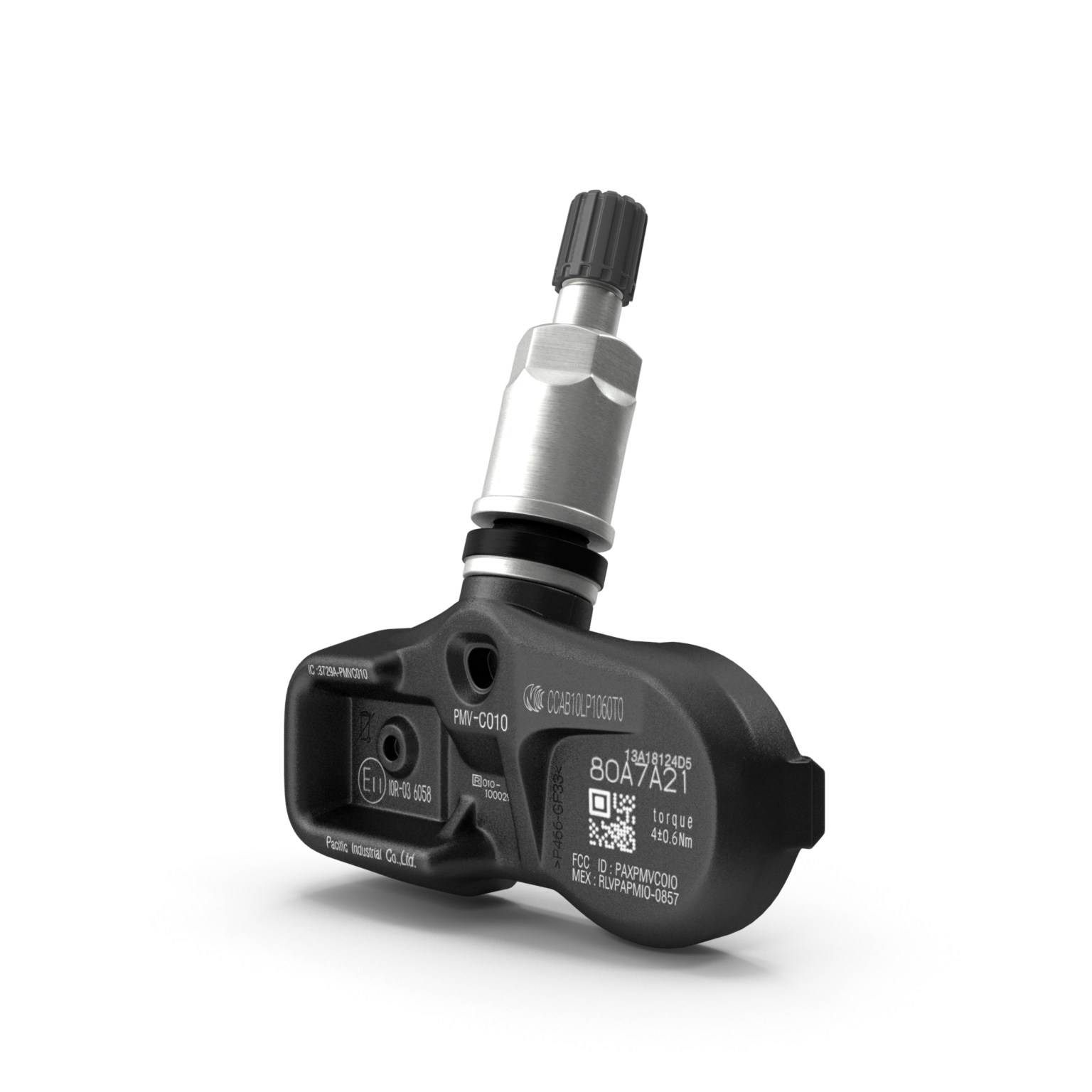The Tire Pressure Monitoring System (TPMS) in Mazda vehicles is a cutting-edge safety feature that helps drivers maintain optimal tire pressure, improving vehicle performance, fuel efficiency, and, most importantly, safety. The importance of maintaining proper tire pressure is often underestimated, but it plays a critical role in the overall health of a vehicle. Under-inflated tires can lead to poor handling, increased fuel consumption, and even accidents. Mazda’s TPMS technology ensures that drivers are alerted to any tire pressure abnormalities, allowing them to take action before it leads to more severe issues. In this article, we will explore how Mazda’s Tire Pressure Monitoring System works, its benefits, and how it contributes to safer driving for Mazda owners.
What is a Tire Pressure Monitoring System (TPMS)?
A Tire Pressure Monitoring System (TPMS) is an advanced vehicle safety feature designed to monitor the air pressure within a vehicle’s tires. It alerts the driver whenever there is a significant drop in tire pressure, which could indicate an under-inflated tire. Under-inflated tires can reduce vehicle performance, decrease fuel efficiency, and pose serious safety risks. In extreme cases, they can lead to tire blowouts, which can result in accidents or loss of control.

There are two primary types of TPMS: direct TPMS and indirect TPMS. Direct TPMS uses sensors in each tire to measure tire pressure and sends real-time data to the vehicle’s onboard system. Indirect TPMS, on the other hand, uses the vehicle’s ABS system to detect changes in tire rotation speed, which can indicate low tire pressure.
Mazda uses direct TPMS in many of its models, providing accurate, real-time tire pressure readings for the driver. The system continuously monitors tire pressure and alerts the driver to any significant deviations from the recommended levels.
How Does Mazda’s TPMS Work?
Mazda’s Tire Pressure Monitoring System works by using sensors located inside each tire to measure the tire pressure. These sensors communicate wirelessly with the vehicle’s onboard computer system, providing real-time information about the tire pressure in each wheel. When the system detects that one or more tires are under-inflated, it triggers a warning light on the vehicle’s dashboard, notifying the driver of the issue.
The warning light typically takes the form of an exclamation point inside a horseshoe-shaped icon, often labeled as “TPMS” or “Tire Pressure.” Some Mazda models display specific tire pressure readings, allowing the driver to see which tire needs attention. The system is designed to trigger an alert when tire pressure drops below a certain threshold, usually around 25% lower than the recommended level.
In addition to monitoring tire pressure, Mazda’s TPMS also helps identify issues like slow leaks or punctures that may not be immediately noticeable. By providing early warnings, the system allows drivers to address tire problems before they escalate, reducing the risk of damage to the tires and improving overall vehicle safety.
Key Benefits of TPMS in Mazda Vehicles
1. Enhanced Safety
The most significant benefit of TPMS is its contribution to road safety. Low tire pressure can severely affect vehicle handling, increasing the risk of accidents. Under-inflated tires are more likely to overheat, which can cause them to wear out more quickly or even fail unexpectedly. By alerting the driver to low tire pressure, Mazda’s TPMS helps prevent blowouts and loss of control, which can be especially dangerous at high speeds.
TPMS also helps improve braking performance, as properly inflated tires maintain optimal contact with the road. This reduces the likelihood of skidding or sliding, especially in wet or slippery conditions, enhancing the overall stability of the vehicle.
2. Improved Fuel Efficiency
Maintaining the proper tire pressure is crucial for maximizing fuel efficiency. Under-inflated tires create more rolling resistance, which forces the engine to work harder and consume more fuel. According to studies, properly inflated tires can improve fuel economy by up to 3%, which can translate into significant savings over time.
Mazda’s TPMS helps drivers maintain the optimal tire pressure, ensuring that the tires are not working harder than necessary. This leads to better fuel economy, which is not only environmentally friendly but also helps drivers save money on fuel costs in the long run.
3. Longer Tire Lifespan
Proper tire pressure extends the lifespan of the tires by preventing uneven wear. Under-inflated tires wear more quickly on the edges, while over-inflated tires can wear out in the center. By maintaining the correct tire pressure, Mazda’s TPMS ensures that the tires wear evenly, which helps maximize their lifespan.
By alerting the driver to any changes in tire pressure, the system allows them to take timely action, such as inflating the tires to the proper level or addressing a slow leak before it causes more significant damage. This proactive approach can help drivers avoid costly tire replacements and ensure their tires last longer.
4. Prevention of Tire-Related Accidents
Low tire pressure can lead to dangerous situations, particularly at higher speeds or during emergency maneuvers. When tire pressure is low, the tire’s ability to grip the road is compromised, which can lead to longer stopping distances, difficulty maintaining control, and an increased likelihood of hydroplaning in wet conditions.
Mazda’s TPMS helps drivers avoid these dangers by providing an early warning when tire pressure is low. This gives drivers the opportunity to address the issue before it leads to a potentially hazardous situation, improving overall road safety.
5. Convenience and Peace of Mind
Having a TPMS in your Mazda vehicle provides convenience and peace of mind. Instead of manually checking tire pressure, which can be time-consuming and sometimes inaccurate, the system continuously monitors the tires and alerts the driver to any issues. This reduces the hassle of checking tire pressure regularly and ensures that tire-related problems are caught early.
Mazda drivers can rely on TPMS to keep their tires in optimal condition, reducing the likelihood of unexpected breakdowns due to tire issues. This feature is particularly helpful for busy drivers who may not have the time or knowledge to monitor their tires manually.
TPMS and Mazda’s i-Activsense Safety Suite
Mazda’s Tire Pressure Monitoring System is an integral part of its broader i-Activsense safety suite, which includes a variety of advanced safety technologies designed to protect drivers and passengers. By combining TPMS with features like Adaptive Cruise Control, Blind Spot Monitoring, and Rear Cross Traffic Alert, Mazda creates a comprehensive safety system that helps drivers stay aware of their surroundings and avoid accidents.
While TPMS focuses on maintaining optimal tire pressure for safety and performance, Mazda’s other i-Activsense technologies work together to improve overall driving safety. For example, Adaptive Cruise Control helps maintain a safe distance from other vehicles, while Blind Spot Monitoring alerts drivers to vehicles in their blind spots. Together, these technologies ensure that Mazda vehicles provide a safe and enjoyable driving experience.
How to Maintain Your TPMS and Tire Health
To ensure the Tire Pressure Monitoring System continues to function properly, it’s essential to keep your tires in good condition and follow a few maintenance tips:

- Check Tire Pressure Regularly: While the TPMS will alert you to low tire pressure, it’s still important to check the tire pressure manually from time to time, especially before long trips. This helps ensure that the system is working correctly and that tire pressure is maintained at optimal levels.
- Inspect Tires for Damage: Regularly inspect your tires for signs of damage, such as punctures, cracks, or uneven wear. If you notice any issues, address them promptly to prevent further damage.
- Rotate Tires Regularly: Regular tire rotations help ensure even wear and extend the lifespan of your tires. This is particularly important for front-wheel-drive vehicles, where the front tires tend to wear faster.
- Maintain Proper Tire Alignment: Proper tire alignment helps prevent uneven wear and ensures that your vehicle handles correctly. If you notice any pulling to one side, it’s essential to have your alignment checked by a professional.
Conclusion: The Value of TPMS in Mazda Vehicles
Mazda’s Tire Pressure Monitoring System is an essential feature that enhances vehicle safety, performance, and fuel efficiency. By providing real-time tire pressure information and alerting drivers to any issues, TPMS helps prevent tire-related accidents, improves fuel economy, and extends the lifespan of the tires. As part of Mazda’s i-Activsense safety suite, TPMS works in tandem with other technologies to provide a comprehensive approach to driving safety.
By maintaining proper tire pressure and utilizing TPMS, Mazda drivers can enjoy a safer, more efficient driving experience. This feature is an invaluable tool for ensuring that your vehicle operates at its best while reducing the risk of accidents and costly tire replacements.

Leave a Reply